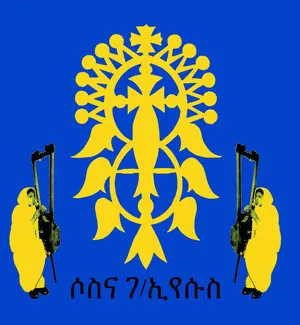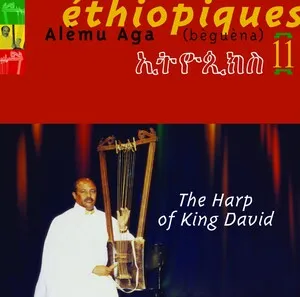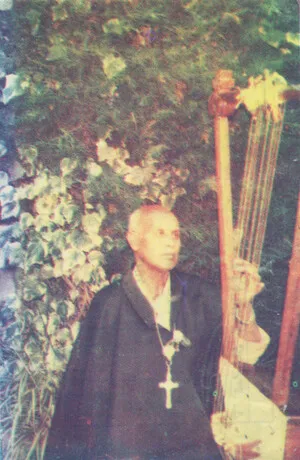Ethiopian church music is the liturgical chant tradition of the Ethiopian Orthodox Tewahedo Church, known collectively as Zema. It is sung primarily in the Ge'ez language and performed by ordained cantors (debtera) and choirs.
Characterized by three principal melodic modes—Ge'ez, Ezel, and Araray—it is a monophonic, modal practice that combines chant with ritual movement (aqwaqwam), hand staff accents (mequamia), and idiophones such as the sistrum (tsenatsil), alongside frame drums (kebero). Notation is preserved through mnemonic signs called melekket rather than fixed staff notation.
Traditionally attributed to Saint Yared in the 6th century, the repertoire structures the entire liturgical year, integrating responsorial and antiphonal forms, call-and-response textures, and solemn processional rhythms. Its sound world is meditative, ornate, and deeply symbolic, binding text, melody, and ritual gesture into a single sacred act.
Saint Yared is traditionally credited with founding Ethiopian church music in the 500s. He systematized the chant repertory and established the three core modes—Ge'ez (often used for ordinary days), Ezel (for penitential and solemn occasions), and Araray (for festal and joyful contexts). From early on, chant was inseparable from liturgical movement (aqwaqwam), the use of the mequamia staff, and ritual instruments like the sistrum and kebero.
Over centuries, the Ethiopian Orthodox Tewahedo Church preserved its music through oral transmission supported by mnemonic neumes (melekket) and a network of chant schools. Foundational hymnals and cycles, attributed to Yared and subsequent scholar-clerics, organized music for the liturgical year, feast days, and fasts. Clerical specialists (debtera) trained rigorously in melody, poetry (qené), and ritual choreography.
By the medieval and early modern periods, regional stylistic accents emerged (e.g., in Gondar, Shewa, and Tigray), while the core modal, poetic, and ritual principles remained stable. Monastic centers and cathedrals served as hubs for transmission, ensuring continuity despite political, linguistic, and cultural change.
In the 20th and 21st centuries, recording technology, radio, and academic ethnomusicology helped document chants, ritual instruments, and performance practice. Cathedral and monastery choirs, as well as church associations, have issued recordings and taught new generations, preserving the ancient sonic and theological heritage of Zema.



%2011%20%3A%20(B%C3%A8gu%C3%A8na)%20The%20Harp%20of%20King%20David%2C%20Cover%20art.webp)




